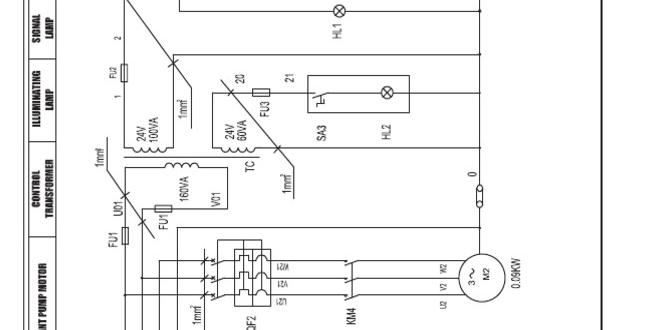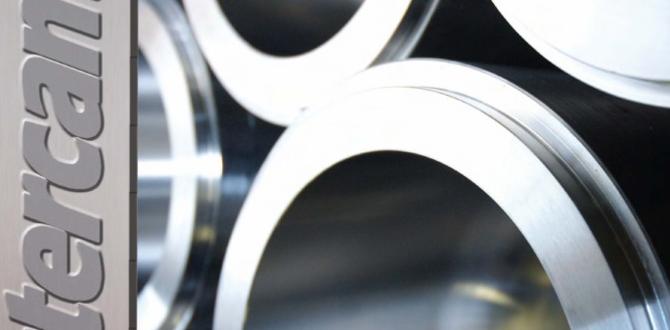Quick Summary
The TiAlN ball nose end mill with a 55-degree helix angle is your go-to tool for precise and clean polycarbonate profiling. It minimizes melting and chipping, delivering smooth edges and accurate cuts for your projects.
Profiling Polycarbonate Made Easy: Your Guide to the TiAlN Ball Nose End Mill (55 Degree)
Ever tried cutting intricate shapes into polycarbonate and ended up with a melted, gunked-up mess? It’s a common frustration for many makers. Polycarbonate, while wonderfully strong and clear, can be a tricky material to machine. It tends to soften and melt easily under the heat generated by cutting tools. This can lead to poor finishes, tool breakage, and wasted material. But don’t worry, there’s a specialized tool designed to conquer this challenge. We’re talking about the TiAlN ball nose end mill, specifically one with a 55-degree helix angle. This tool is a game-changer for profiling polycarbonate, offering a smoother, cleaner, and more controlled cutting experience. Stick around, and we’ll walk you through exactly why this tool is so effective and how to use it for perfect results every time.
Why Polycarbonate is Tricky to Machine
Polycarbonate, known for its impact resistance and transparency, is a popular choice for everything from machine guards to custom enclosures. However, its thermoplastic nature is its Achilles’ heel when it comes to machining. Unlike metals or many plastics, polycarbonate has a low melting point. When a standard cutting tool spins at high speeds, it generates friction, which in turn creates heat. This heat is enough to soften and even melt the polycarbonate ahead of the cutter. As it melts, it can gum up the cutting edges, leading to:
- Surface Glazing: The material hardens into a smooth, shiny layer, making subsequent cuts difficult.
- Chipping and Cracking: Localized heat can make the material brittle, leading to unwanted chips or cracks, especially on corners and edges.
- Poor Surface Finish: The melted material doesn’t cleanly break away, resulting in a rough and uneven edge.
- Tool Loading and Breakage: Melted plastic clings to the end mill, dulling it quickly and potentially causing it to break.
To overcome these issues, we need a cutting tool that can manage heat effectively and shear the material cleanly rather than melt it. This is where our star player, the TiAlN ball nose end mill with a 55-degree helix angle, comes in.
Introducing the TiAlN Ball Nose End Mill (55 Degree)
Let’s break down what makes this specific end mill so well-suited for polycarbonate profiling.
1. Ball Nose Design
A ball nose end mill, as the name suggests, has a hemispherical tip. This shape is fantastic for creating rounded profiles, fillets, and intricate 3D contours. For profiling, it means you can easily cut smooth, curved edges and corners without sharp, stress-concentrating points. This design is also beneficial because only the side and the tip cutting edges are engaged at any one time, promoting a more controlled cut compared to a square-end mill that engages a full perimeter.
2. TiAlN Coating (Titanium Aluminum Nitride)
The “TiAlN” stands for Titanium Aluminum Nitride. This is a super-hard, protective coating applied to the cutting tool. Here’s why it’s crucial for cutting plastics like polycarbonate:
- Increased Hardness: TiAlN is incredibly hard, which helps the end mill resist wear and maintain its sharp edge for longer.
- Reduced Friction: The coating creates a smoother surface on the tool, allowing chips to evacuate more easily and reducing friction.
- High-Temperature Resistance: This is key for polycarbonate. TiAlN coatings can withstand much higher temperatures than uncoated carbide. This means the tool stays cooler during the cut, significantly reducing the chances of melting the plastic. It forms a protective barrier that sheds heat away from the cutting edge more effectively.
You can learn more about the properties of TiAlN coatings and their impact on cutting tools from resources like the National Institute of Standards and Technology (NIST), which discusses the role of coatings in advanced manufacturing.
3. The 55-Degree Helix Angle
The helix angle refers to the angle of the flutes (the spiral grooves) on the end mill. A 55-degree helix angle is often considered “medium” or “high” in the world of end mills. Here’s why it’s beneficial for machining plastics:
- Efficient Chip Evacuation: A steeper helix angle (like 55 degrees) provides a more aggressive cutting action and helps to pull chips away from the workpiece more effectively. For polycarbonate, this is vital. It clears away the cut material quickly, preventing it from re-melting and re-welding onto the workpiece or the tool.
- Smoother Finish: The 55-degree angle generally leads to a smoother cut and better surface finish compared to tools with very low helix angles. It allows for a more continuous engagement with the material, shearing it cleanly.
- Reduced Chatter: A well-designed helix angle can also help dampen vibrations, leading to less chatter and a more stable cutting process.
While some very soft plastics might benefit from even higher helix angles or specialized plastic-cutting geometries, the 55-degree TiAlN ball nose end mill strikes an excellent balance for polycarbonate, offering durability, heat resistance, and clean cutting performance.
When to Use a TiAlN Ball Nose End Mill for Polycarbonate
This tool shines in specific applications:
- Intricate Profiling: Cutting complex outlines, curves, and shapes.
- 2.5D Machining: Creating features with varying depths and gentle slopes.
- Creating Radiused Edges: Adding smooth, rounded corners to parts.
- Engraving and Lettering: For decorative or functional text.
- Hole Drilling (with caution): While not its primary purpose, it can be used for shallow pocketing or to start a hole, but a dedicated drill bit is usually better.
Setting Up Your Machine for Success
Using the right tool is only half the battle. Proper machine setup is crucial for achieving great results with polycarbonate.
Recommended Speeds and Feeds
Finding the perfect “sweet spot” for spindle speed (RPM) and feed rate (how fast the tool moves through the material) is critical. Too slow a feed or too fast a speed generates heat. Too fast a feed or too slow a speed can lead to chip jamming or tool breakage.
For polycarbonate using a TiAlN ball nose end mill, here are some general guidelines to start with. Always perform test cuts on scrap material before machining your final piece!
| Material | Tool Type | Diameter (in.) | Spindle Speed (RPM) | Feed Rate (IPM) | Depth of Cut (in.) | Chip Load (in./tooth) |
|---|---|---|---|---|---|---|
| Polycarbonate | TiAlN Ball Nose End Mill (55 deg) | 1/8″ | 8,000 – 15,000 | 15 – 30 | 0.020 – 0.050 | 0.001 – 0.002 |
| Polycarbonate | TiAlN Ball Nose End Mill (55 deg) | 1/4″ | 6,000 – 12,000 | 20 – 40 | 0.030 – 0.075 | 0.001 – 0.003 |
| Polycarbonate | TiAlN Ball Nose End Mill (55 deg) | 1/2″ | 4,000 – 8,000 | 30 – 60 | 0.050 – 0.100 | 0.002 – 0.004 |
Important Notes:
- Chip Load: This is the thickness of material removed by each cutting edge (tooth) of the end mill. It’s often a more critical factor for preventing melting than RPM or feed rate alone. A higher chip load, within reason, can help shear the material cleanly.
- Coolant/Lubrication: For polycarbonate, a light mist of air or a specialized plastic cutting fluid can be very beneficial. Avoid flood coolants, as they can cause issues with electrical components on some machines and aren’t always necessary for plastics. A blast of compressed air helps clear chips and reduce heat.
- Machinery Rigidity: These numbers are a starting point. A very rigid machine can handle more aggressive feeds and speeds. A less rigid machine might require slower speeds to prevent chatter and vibration.
- Depth of Cut: Always use a shallow depth of cut, especially in corners or when profiling. This reduces the heat buildup and the load on the tool. Multiple passes are better than one aggressive pass.
For more in-depth guidance on speeds and feeds, the Sandvik Coromant website offers a wealth of information and calculators that can be adapted for similar geometries.
Workholding is Key
Securely holding your polycarbonate sheet is paramount. Use clamps or a vacuum table that won’t flex or damage the material. Ensure the workpiece is flat and stable against the machine bed. Any movement can lead to inaccurate cuts or tool crashes.
Tool Holder Selection
Use a high-quality tool holder, preferably a shrink-fit holder or a well-maintained collet chuck, to ensure minimal runout (wobble). Excessive runout will lead to uneven cutting, increased heat, and a poor surface finish. A tight grip on the shank is essential.
Step-by-Step Profiling with Your TiAlN Ball Nose End Mill
Let’s get to it! Here’s a basic outline for profiling polycarbonate.
1. Prepare Your CAD/CAM Model
Design your part in CAD software. Ensure your design is clean and free of unneccessary complexity that could stress the tool. In your CAM software, create a toolpath for profiling. Key settings here will include:
- Tool Selection: Choose your 55-degree TiAlN ball nose end mill.
- Cut Direction: For profiling, climb milling is often preferred for plastics as it tends to produce a cleaner edge and reduces the tendency to “push” material.
- Stepover (for roughing/profiles): If you’re not doing a single-pass profile, set an appropriate stepover for any pocketing or roughing.
- Number of Passes: Plan for multiple shallow passes rather than one deep cut.
2. Secure Your Workpiece
Double-check that your polycarbonate sheet is firmly clamped down and won’t move during the machining process. Ensure it’s perfectly level.
3. Set Up Your Machine
Install the end mill into your tool holder and machine spindle. Ensure your Z-axis zero (and X/Y zeros) are set accurately at your desired starting point on the workpiece.
4. Test Cuts (Highly Recommended!)
Before committing to your final part, machine the profile on a scrap piece of polycarbonate. Start with conservative speeds and feeds that are at the lower end of our recommended ranges. Watch and listen to the cut. Is the material melting? Is the tool chattering? Adjust your feed rate and/or spindle speed incrementally. A good cut will sound like a clean, crisp “shaving” rather than a squeal or a grinding noise.
5. Execute the Profile Cut
Once you’re confident with your test cuts, run the main program.
- Start Slow: Begin the machining process and monitor closely.
- Clear Chips: Ensure your air blast or mist coolant is working effectively to clear chips and keep the tool cool.
- Observe the Finish: Look for any signs of melting, chipping, or glazing. If you see any, stop the machine and re-evaluate your speeds, feeds, or depth of cut. You may need to slow down your feed rate, increase your spindle speed slightly, or reduce the depth of cut.
- Multiple Passes: For thicker polycarbonate, allow the CAM software to make multiple passes. The final finishing pass should be very shallow to achieve the best edge quality.
6. Finishing Touches
Once the profile is cut, carefully deburr any minor imperfections. A fine file or fine-grit sandpaper can be used gently. Avoid aggressive sanding that could polish or melt the edges.
Troubleshooting Common Issues
Even with the right tool, occasional hiccups can occur. Here’s how to address them:
- Melting/Gunking Up:
- Solution: Increase feed rate, decrease spindle speed, or reduce depth of cut. Ensure good chip evacuation (air blast). Check tool sharpness.
- Chipping/Brittleness:
- Solution: Decrease feed rate, increase spindle speed slightly, or increase depth of cut (if the machine is rigid enough, allowing for a more continuous shearing action). Ensure the material isn’t over-heated.
- Poor Surface Finish (Rough Edges):
- Solution: Ensure fly cutting (multiple shallow passes) is enabled if you’re not doing a single-pass profile. Check for tool runout or vibration. Verify you have adequate chip load.
- Tool Breakage:
- Solution: This is usually a result of too much side load, too deep a cut, insufficient feed rate, or material inconsistencies. Slow down, use shallower cuts, and ensure the tool is properly engaged.
Remember, patience and iterative adjustments are key when machining any material, especially plastics.
Alternative Tools and When to Use Them
While the 55-degree TiAlN ball nose end mill is excellent, other tools might be suitable depending on the specific task:
- Single Flute Up-cut/Straight Flute Plastic End Mills: These are often designed with a sharper cutting edge and polished flutes specifically for plastics. They excel at clearing chips upwards and preventing melting. Great for softer plastics but can sometimes be less rigid than multi-flute carbide.
- Specialized Plastic Router Bits: If you’re using a CNC router and not a milling machine, dedicated router bits for plastics can perform very well.
- Square End Mills: For creating sharp internal corners or precise straight edges, a square end mill is necessary. However, when profiling curves, a ball nose is superior.
The choice often comes down to the desired edge finish, the complexity of the geometry, and the rigidity of your machine. For precision contouring and 3D work on polycarbonate, the 55-degree TiAlN ball nose remains a top choice.
For more on plastic machining best practices, organizations like the PlasmaTool offer valuable insights into material-specific techniques.
FAQ about TiAlN Ball Nose End Mills for Polycarbonate
Q1: Will a standard uncoated end mill work for polycarbonate?
A1: While it might be possible for very simple, shallow cuts on thick material with extremely conservative settings, it’s not recommended. Uncoated end mills generate more heat, leading to melting and poor finishes. A coated end mill, especially TiAlN, offers superior performance.
Q2: Can I use this tool for other plastics like Acrylic or ABS?
A2: Yes, the TiAlN ball nose end mill with a 55-degree helix can also work well for Acrylic and ABS. However, Acrylic tends to be more prone to chipping, and ABS can be a bit gummier than polycarbonate. You might need to adjust speeds and feeds, generally running slightly faster feed rates for Acrylic and potentially slower for ABS, while always prioritizing chip evacuation and a shallow depth of cut for all.
Q3: What does “55 Degree” refer to on an end mill?
A3: The “55 Degree” refers to the helix angle of the cutting flutes. This angle affects how the tool engages the material and evacuates chips. A 55-degree angle is considered a medium-to-high helix, providing good chip clearance and a






